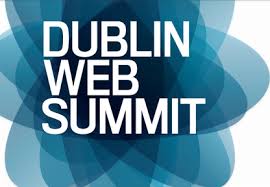When we talk about the term “influencer marketinga”, we’ve come a long way since the days of sponsored articles on low-quality blogs.
These days, a strategic plan for working with creators’ which has been implemented correctly using software and techniques that nurtures relationships a means that influencer marketing is powerful, and is on the rise.
As many a 67% of marketing agencies and industry experts said that influencer marketing initiatives allow them to contact a more focused crowd, too. Instead of pushing their products out to people who could be interested in their business, they’re targeting specific audiences that are most likely to be interested in their brand. This makes influencer marketing campaigns cost-effective.
But even throughout all of the hype surrounding this new type of marketing, there’s one question that remains on everybody’s lips.
What is going to happen to influencer marketing in 2018?
In this article, we’ve shared the six influencer marketing trends we expect to see this year – and how you can get a slice of the action.
1. Quality in content creation will increase
You’re not alone if you’ve taken steps to prevent being shown advertisements when on the internet. In fact, almost half of U.S. adults confessed to using ad blockers, and opting ad-free services (like Netflix) to escape the constant promotion.
That’s because consumers are favouring marketing campaigns that feel more authentic and less ‘forced’.
One type of organic, valuable content is video.
Organic social videos have been the leading type of content since Facebook praised it over three years ago. Although their algorithm is changing (and expected to give brands less space in a user’s News Feed), there’s no reason to believe that quality content – in the form of organic videos – will see a similar decline.
Especially not when you remember that video is the most influential type of content to be used on social media, and can be twice as powerful in driving sales than text-based content!
It’s becoming stronger every year. The versatile world of video marketing has seen a HUGE evolution over the past couple of years. Many experts are saying that it is the future of content marketing as a whole – Sofi Shvets (@Sofi_Shvets, Former Google, Co-Founder and CMO Letsenhance.io).
Brands and creators can optimize this to supercharge their influencer marketing tactics. Instead of creating content for the sole reason of advertising, both sides can work together to create fun, unique content that doesn’t fall through the cracks of a quality-first social algorithm.
Here at Buzzoole, we’ve developed a partnership with Flixel; a software that allows creators to build their own cinemagraphs for influencer marketing campaigns. This allows creators to have control over the branded content they’re promoting, and brands experience the benefits that come from quality, unique content.
After all, it is a win-win game for everyone involved: more engagement for influencers, and better results for brands!
2. More transparency
Creators could take years to become well-known influencers. Unless they have an A+ marketing strategy that transforms their online channels overnight, they need to nurture relationships with their audience before they’re able to influence them.
Think of it like becoming friends with someone. You’re more likely to trust your friend of six years more than a complete stranger, right?
Because of this effort that it takes for creators to build trust online, they don’t want to lose it.
People – including an influencer’s audience – are influenced by authenticity. They don’t like to feel cheated into buying something, which is why many creators turn down marketing collaborations.
They don’t like the risk of publishing branded content and turning away their audience. The use of #ad on Instagram has double over the past 12 months, and this is a sign the practice of influencer marketing has increased together with transparency.
Platforms such as Facebook and Instagram have rolled out new policies to regulate paid partnerships, but transparency is not limited to creators and the platforms they work on.
Brands want total transparency throughout their campaigns, which is why they use influencer marketing platforms such as Buzzoole. The entire process of their influencer marketing campaigns is managed through a dashboard, accessible at any time to monitor and deep-dive into the results of their campaigns.
3. Wider use of Artificial Intelligence
The term “influencer marketing” has had it’s fair share of criticism.
Brands held back on their sponsorship deals with a fear of investing in “fake influencers with fake followers”. After all, it’s difficult to determine how genuine a creator’s online presence is – especially when it’s so easy to buy followers and exaggerate engagement rates.
However, the introduction of Artificial Intelligence (AI) is boosting the trust that brands have in influencers.
Our proprietary technology GAIIA (Growing Artificial Intelligence for Influencer Affinity) relies on visual search technology using an AI-based image recognition system, with big data and natural language analysis to help brands identify creators with the highest brand affinity.
GAIIA can also identify suspicious patterns in an influencer’s followers profile, and spot fake any fake engagement that may be taking place on their platform.
Over the course of this year, expect to see a surge in the use of AI in all stages of influencer marketing campaigns – from prospecting potential creators to measuring the success of a collaboration, and detecting fake engagement.
A recent survey found that 27% of marketers worldwide are planning to adopt some form of AI into their marketing strategy within the next couple of years. Why not make 2018 the year that your company benefited from it in influencer marketing?
4. More focus on (real) metrics and ROI
In the recent past, influencer marketing was another fad that brands used to promote their business with no way to track it’s a success. Brands would ship products off for budding content creators to share, only to be left with an unchanged bottom line and questions like, “how can I get my influencer to really drive sales?”
Fast-forward to 2018 and silly, untrackable campaigns are a thing of the past.
This year, brands will still be tracking key metrics, such as a creator’s follower count and engagement rate. The change comes in the form of new Key Performance Indicators (KPIs), such as the effectiveness on brand KPIs and sentiment analysis. But, in order to do this, an in-depth analysis of influencer’s audience is required prior to, and after, the campaign.
We’re currently working with Nielsen on an Influencer Brand Effect evaluation. This new addition will extend primary brand metrics (such as brand awareness and intention to buy), and the effectiveness of influencer marketing on brand image.
In 2018, say goodbye to taking a stab in the dark about the success of your campaign.
…Say hello to trackable metrics that tell you whether the influencer was actually worth the investment.
“You need data to determine the campaigns, content, influencer are performing and where you need to adjust. If you’re going to engage in influencer marketing, then you need to invest in some type of influencer marketing platform”. – Sue Duris (@SueDuris, Director of Marketing and Communication at M4 Communications).
5. Brands will invest more in influencer marketing platforms
Influencer marketing is a relatively new form of digital marketing. Because of the teething problems that it has experienced, and the fact that software is constantly developing, many businesses haven’t previously assigned a big budget to their online collaborations.
However, this is set to change in 2018. More companies than ever before are investing in influencer marketing, and businesses are shifting from the proof to the perfecting stage to free-up extra budget.
But, brands are money conscious. They want to invest in marketing strategies that are proven to work, and give the best ROI. Forget about agencies – only tech platforms can provide that. And, the platform using the best tech will ultimately win in a space that has become increasingly crowded.
Because the habits are evolving in a wide range of industries, influencer marketing is evolving in the same way of pre-roll and display – and its impact is now trackable.
“It doesn’t matter how big your budget is. If you fail to distribute the funds effectively, you’ll hardly yield a high return on investments.” -Shane Barker(@shane_barker, Influencer Marketer & Consultant for Hire).
6. Long-term collaborations will rise
Because of the newfound budgets for influencer marketing, it won’t be a one-off activity that brands complete for an extra marketing push.
Instead, brand’s inflated budgets will allow them to work with creators several times by using an influencer marketing platform. Not only will this help to boost their brand awareness, but it’ll help to building long-term, mutually beneficial relationships between creators and brands.
The benefit of this? The two teams can work together and create a strategy that suits both parties. The brand can explain their aim for the campaign, and the creator can build a deeper connection with their increasing campaigns’ success.
A solid relationship that forms the foundation of an influencer campaign is extremely beneficial. Because budget is no longer an issue for brands to do this, expect to see more long-term collaborations between creators and brands, this year. And get ready to build yours.
Using influencer marketing – and genuine influencers – as part of a long-term strategy will create long-term results. And isn’t that what you’re really want when you’re trying to build an authentic brand? – Jeff Haden (@jeff_haden, Author, Contributor Editor at Inc and Linkedin Influencer).
To learn more about influencer marketing and discover how the Buzzoole software can help your business in 2018, drop us an email. We’d happily share the influencer marketing love!


